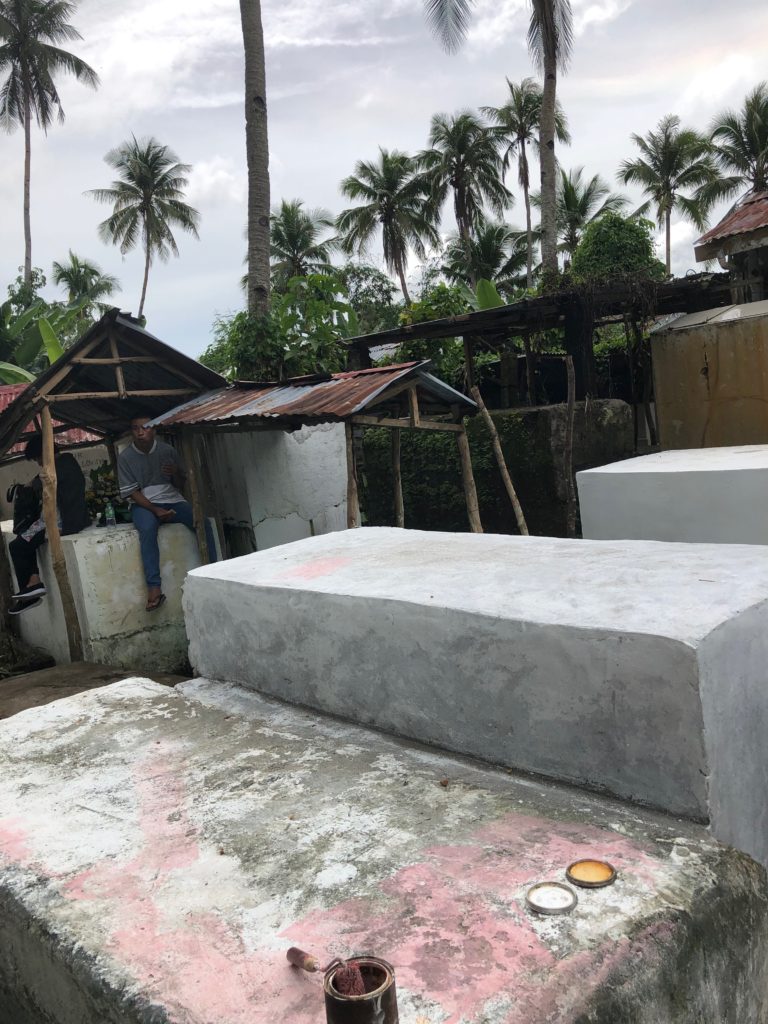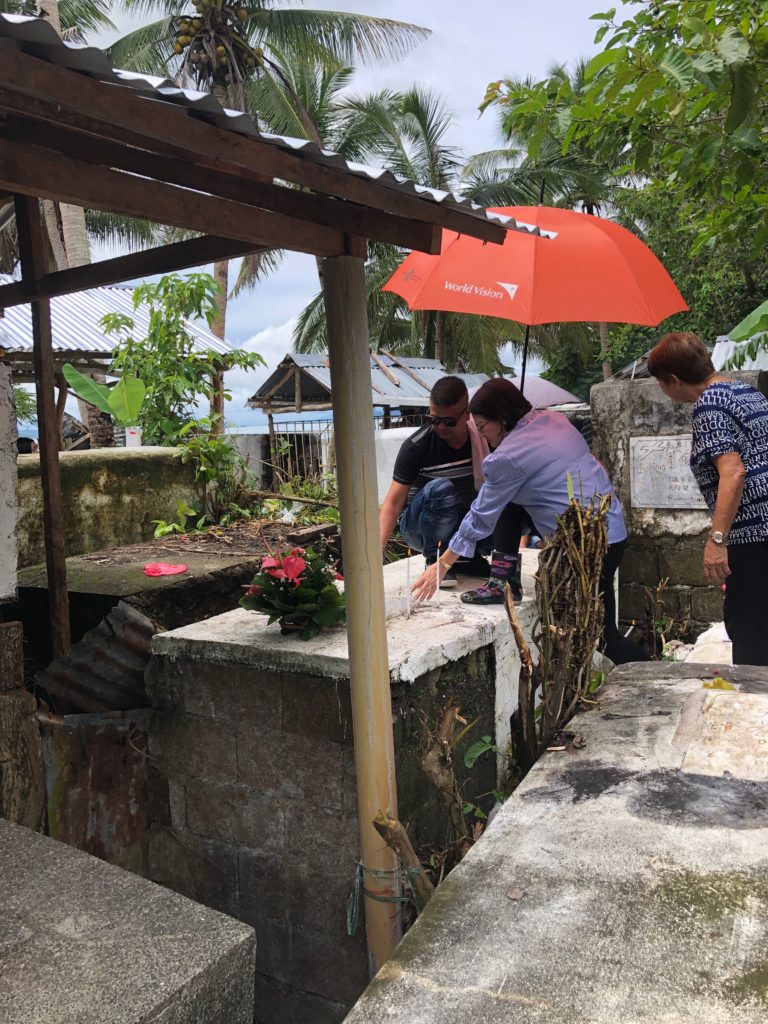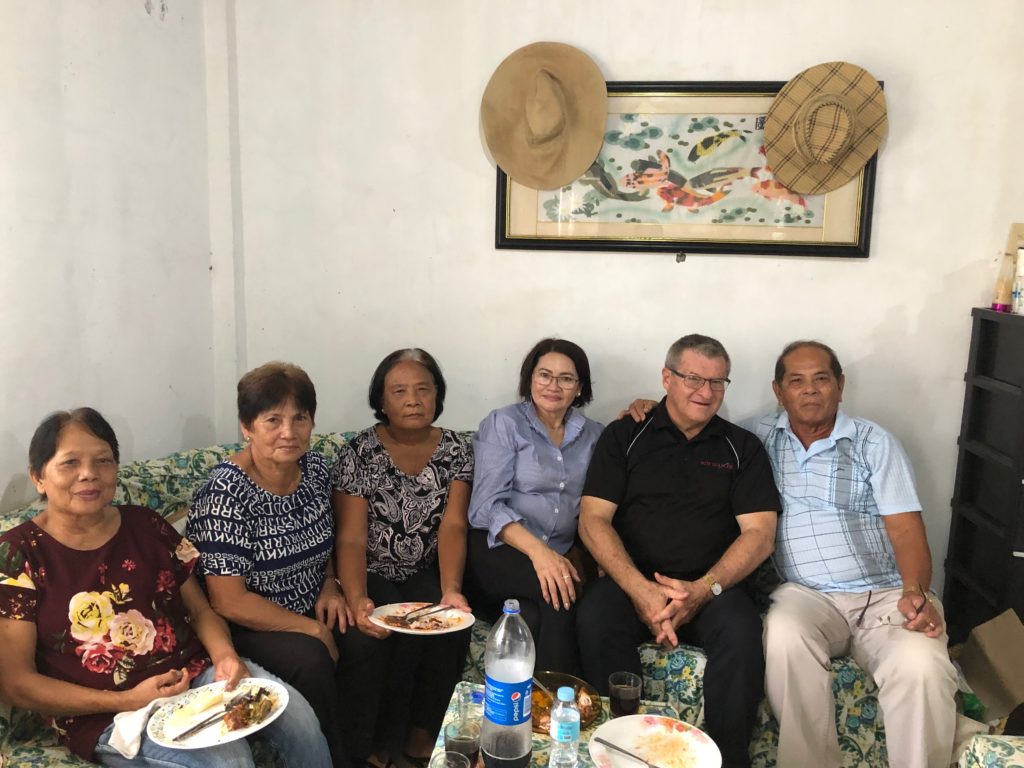Samar continued…
The point of our visit was to visit Carmen’s family, both living and departed, in Santa Rita, her home town in Samar Province. All Souls Day is much revered in the Filipino calendar (95% Christian, 70% Catholic) and while Carmen is not stridently religious she is culturally influenced. We visited her two sisters and their extended families in Anibongan Barangay and then carried on to the main town of Santa Rita.
Santa Rita is a series of small villages along a long road running from the highway down to the channel separating Samar from Leyte, but Santa Rita village is the main town located on the channel itself. There are in fact 38 barangays (villages) that make up the whole district; about 26,000 people altogether. Carmen’s clan mostly live in Anibongan Barangay, about half way between the highway and the main town.
Here’s a bit of the main town:

Carmen had warned me that the cemetery in Santa Rita, and for that matter anywhere in The Philippines, was nothing like what we have in Canada. She had already visited with me Pinecrest Cemetery to pay our respects to Marlene, and Little Lake Cemetery in Peterborough, to see my parents and grandparents, and it must have been shocking to her the contrast. Certainly it was shocking to me to see the reverse. As is common in many European places and colonies, most graves are above ground encased in concrete as contrasted with graves in England, and cemeteries in English colonies which graves are interred. What I wasn’t prepared for was the absolute jumble this cemetery was, tombs at every angle, no order or separation between them. Cluttered, overgrown, and litter everywhere. Jarring. You have to climb over tombs to get from one to another. Many have little corrugated steel roofs over them and you have to watch your head as you clamber from one grave to the next. I found myself apologizing to the occupant. Yet the devoted families are vigilant with candles, flowers and even food; they don’t seem to mind the traffic.
Here are a few thousand words in pictures.


After the cemetery visit we returned to Santa Rita proper to visit another branch of the family, Gaodencio Otangin Espino – Tito Dini – and his clan. Dini is the mayor of Santa Rita and had been the Chief of Police for Western Samar for 26 years. Carmen was like an adopted daughter to Dini and his wife, Ninita. When I met the patriarch I knew I had to be on my best behaviour, confident yet respectful: this was his turf, and he knew he was in charge. Besides, this was the man who had guaranteed my safety!
We got along famously. All I had to do was ask him a few questions about his life and off he went. I also had to be circumspect in my answers to his questions: ‘What is your religion?’ he asked. ‘Ummm, Unitarian.’ I got a puzzled look but decided not to give him the long answer (home for me to practice my agnosticism) and he found that Unitarianism as a particular branch of protestantism acceptable. ‘How old are you?’ he asked, to which the only answer was to ask, ‘how old do you think I am?’ ‘Fifty-six,’ he said. What a politician. He himself is proud to be turning 70 next April.

After a time my cold was getting the better of me so we made our goodbyes and we headed back to Anibongan and then Tacloban.
The next day we went to the Tacloban harbour where I encountered a hostile bacillus (likely that Mcdonald’s hamburger) and that was the end of our Tacloban tour, preferring instead the friendly confines of the Ironwood Hotel.
